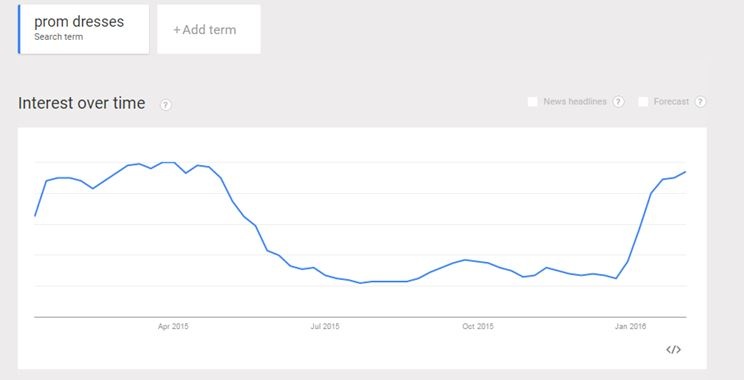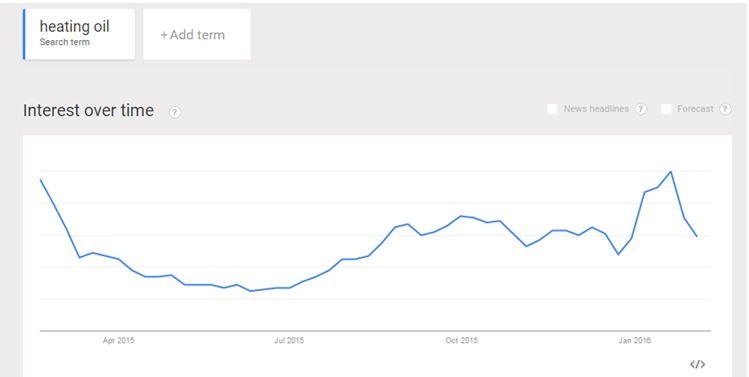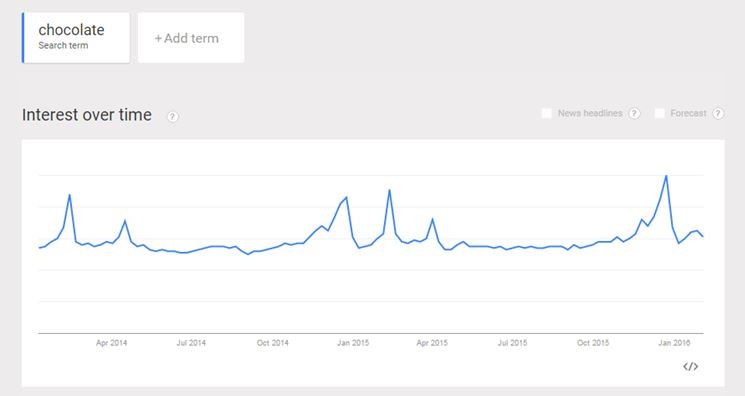When was the earliest you’ve ever seen a Christmas/holiday commercial? Even though the big day is December 25th, I clearly remember seeing a major shoe retailer run their first TV holiday spot on October 5th. That’s almost 3 months early!
What about your local drug store/pharmacy? Do you ever notice when they first mark a particular aisle (usually positioned on the way to the food/pantry section) as “Seasonal” and start filling it with Halloween or Christmas decorations? Sometimes, it can be several months ahead.
Of course, your brand’s organic search campaigns and on-site optimizations should follow the same rhythm of putting relevant, authoritative content in front of users when they are most likely to search for it. Read on for recommendations on how to make your content work for you, no matter the season.
Seasonal Content Doesn't Have to Be Brand New
If you think about it, Rite-Aid doesn’t build a new aisle every time they need to put out a seasonal display. Instead, they repurpose an existing aisle to suit their needs for their various seasonal promotions.
For brands that are used to developing long-form, authoritative content in a particular niche, planning for seasonal shifts can mean not just a new seasonal blog post, but an entire section. For example, if I have a website selling dresses, I may want to create a new subfolder or hub specifically for prom dresses, or if I'm selling chocolate, I may create a new section entirely for Valentine's Day Chocolates.
While this is a viable strategy that works, it can also be resource intensive. We know shopping "seasons" start earlier than we may think, so any kink in the creation or roll-out of the content may cause delays which, in turn, cause you to miss the start of your season.
One way to solve this is to focus your optimizations not on a brand new content section, but on updating existing content or product pages to emphasize relevancy to the new season.
For example, let’s say I want to create a “Valentine’s Day Chocolate” section on my chocolate website. I could either create a new section, or I could dig into analytics and sales records to find that dark chocolate sells the best around V-day, and update that “/dark-chocolate” page to be more focused on the upcoming holiday.
For example, if my “/dark-chocolate” page title tag is “Dark Chocolate” I may want to update my title tag to include the keyword “Valentine’s Day” and even the date “2016”. Now my title tag is “Valentine’s Day Chocolate 2016”
I may also add content to the page or product description that emphasizes V-Day, with something like “Dark chocolate is our most popular chocolate sold for Valentine’s Day!”
I may even update my internal anchor text pointing to my “ /dark-chocolate” page. Since navigation elements, footer links, and internal content links may currently say “dark chocolate” or some variation of that, I could change some of them to include variations of the phrase “Valentine’s Day”
Note: One thing I would likely not do is change the URL of the page. This is because I want to utilize the existing authority of my content, and changing the URL may have an impact on that. There is also once again, the issue of timing: any new page or URL you create will need time to build authority, which may make you miss time during your big season.
Refresh Your Successful Blog Content to Make it Relevant for a First Time Visitor
Remember that great evergreen content piece you wrote 6 months ago? The perfectly optimized one that was genuinely useful to your site visitors and brought in a ton of high quality traffic to boot? Open up that document and take a look—there are likely some things that have changed in your industry/niche since your first published that post, maybe even enough to warrant an update. Try updating or refreshing the content with the latest developments, and then republishing the content on the original URL. Since the post has had several months to build authority, and you're adding more relevant information, Google should be more likely to show this page to searchers.
Once your post is updated, published, indexed, and ranked, this could significantly help your clickthrough and engagement on that piece of content. Google has always emphasized fresh, new, relevant content, and to that end, Google displays the date the post was published. Refreshing your content page creates a new, more recent "Published On" date. Since most users are looking for the latest news, not months or years old information, this means users are more likely to click the same piece of content with a newer date than they are to click something that seems to be outdated.
Note: Don't be spammy. If you're going to update an old piece of content, please make sure that the update is as relevant, useful and necessary as the original piece.
Leverage Local
If your business or niche has a brick and mortar location, or a service area which necessitates a local landing page, you can also amend the title tag, meta description, alt tag images, product description, internal link anchor text, etc. to more seasonal variants. If you leverage Google My Business, the GMB API, or especially third-party local search aggregators, you can leverage them to update your local citations with your seasonal variation. This should also serve to provide additional, useful signals to search engines.
Use Social Signals to Build Timely Interest
If you have updated an existing site asset to correspond to a particular season, follow it up by promoting the updated content via social media. Although the true relationship between social signals and organic ranking may not be perfectly clear, having recent signals such as shares, links, email clicks, or anything else which shows search engines that users are interacting with your content NOW may prove valuable.
Double-Check When Your Big Season Begins
If you have worked in your niche for any length of time, then you have likely got a good feel for when the different major seasons are. Checking your year-over-year organic search rankings, sessions, click-path, and conversions is a great refresher, but it may also be a good idea to test your brand’s data against overall search interest which may start earlier or later in general than it does in your specific niche. Using Google Trends we can see some examples:
 Seasonal Search Trends for "Prom Dresses"
Seasonal Search Trends for "Prom Dresses"
Proms usually happen towards the end of the school year in late April, May or early June. As we see from the graph, by January, the internet search for prom dresses is at or nearing its peak, despite the fact that the actual prom is several months out. In fact, by looking at a yearlong search trend, we can see that interest in this query begins to pick up around September (when the school year starts) and again around Thanksgiving/early December. This information is telling me that my “prom dresses” organic search campaign should be in place no later than December for the January upswing, and that I may also want to emphasize “prom dresses” around September and late Fall. As long as this data matches with my experience and internal analytics, it seems to be a great direction to go.
 Seasonal Search Trends for "Heating Oil"
Seasonal Search Trends for "Heating Oil"
In the next example, let’s look at the term “heating oil.” In this case, “heating oil” refers to use that customers use to heat their homes or businesses during winter. Notice that although it doesn’t begin to get cold until September or October in most of the U.S., search interest for this competitive term picks up all the way back in June/July. By the time winter is in full swing by January, there is another huge increase in interest. In this case, I may go back and re-optimize or refresh my “heating oil” pages in December, after having initially optimized during the summer. This way, it may be possible to capitalize on that huge spike in consumer interest.
 Seasonal Search Trends For "Chocolate"
Seasonal Search Trends For "Chocolate"
For our final example, let’s go back to good old chocolate. This term seems to have several spikes in interest throughout the year which roughly correspond with the major U.S. chocolate-giving holidays of Valentine’s Day, Easter, Mother’s Day and Christmas/Holiday.
If I knew my “/milk-chocolate” page received an upswing in search interest and sales around Valentine’s Day and Mother’s Day, for example, I may alter the “ /milk-chocolate” page twice: once around each holiday. So long as there is genuine user interest, and the content of the page is relevant and authoritative for both terms at their respective times, this strategy will be useful to my customers.
Own Your Seasonal Niche
By updating existing authoritative content—including product pages, blog posts, or local pages—knowing when your season begins, and paying careful attention to how and when your customers use your site, you can make your brand’s existing content work for you any time of year.
Doubt this strategy? Tried it and love how it works? Leave us a comment below to discuss and share!



COMMENTS